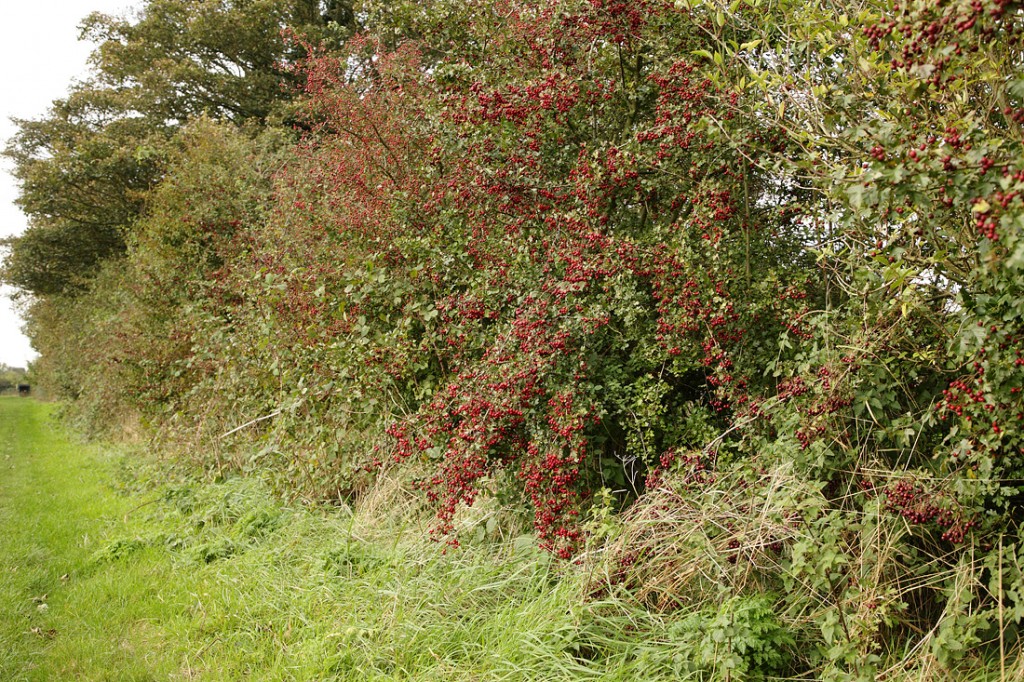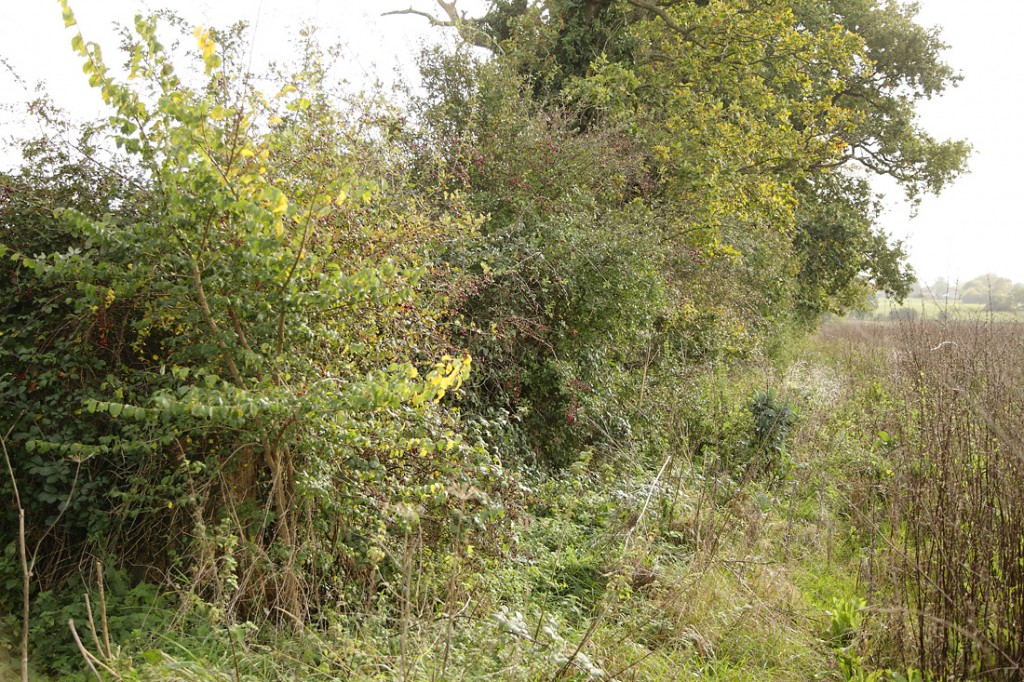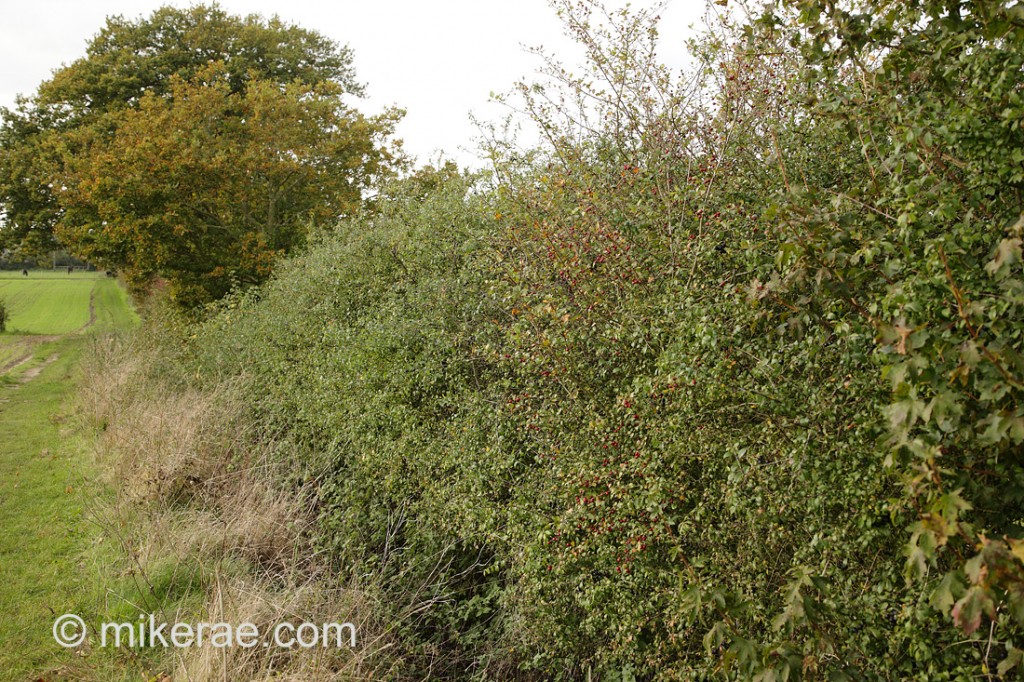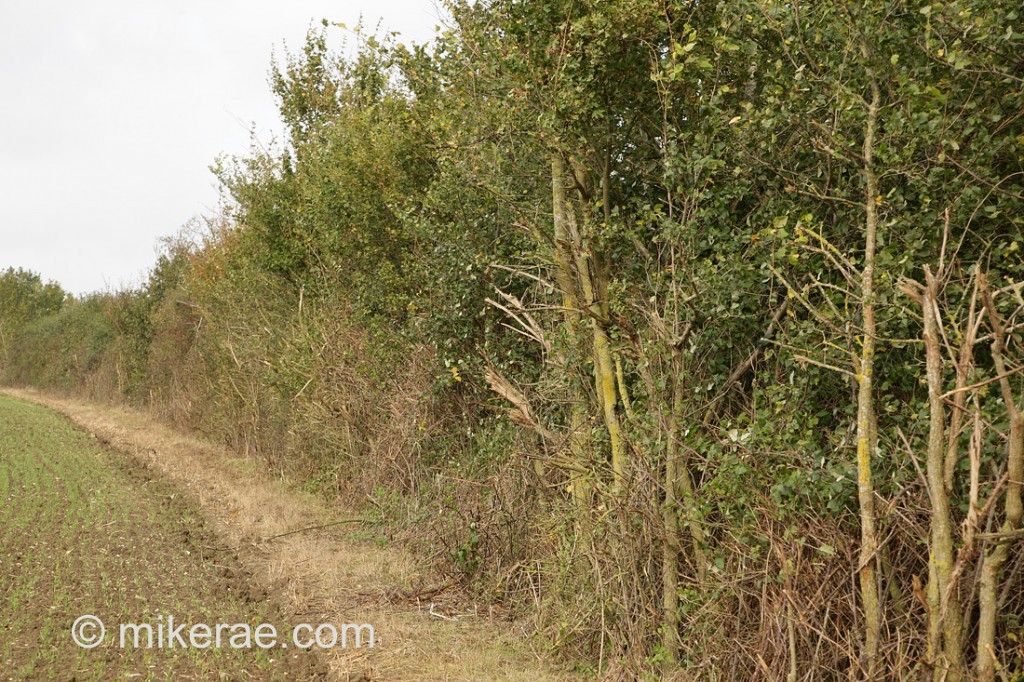I should declare an interest, I learnt about hedges at university. One of the hedges at the back of the department was at least 1000 years old and could even have been older, left over from the woods that covered Britain after the last ice age. Hedges are a window into the past and an integral part of the landscape.
In Suffolk hedges are boundary markers and can help prevent soil erosion from wind and rain. On many farms hedges that were removed in the last 50 years to accommodate larger machinery have been reinstated to protect crops and topsoil and to enhance the landscape. The status of hedges is a visible indicator of agricultural policy and of the incentives available to landowners. Hedges can also be a vital resource for wildlife on intensively farmed land.
Food and shelter are the key benefits for wildlife, older hedges are usually a richer resource but equally important is how the hedge is managed. Left uncut a hedge quickly becomes a row of trees, of less value and shading crops. In Suffolk hedges are managed using large tractor mounted trimmers, the job needs to be done quickly, usually in late summer between harvest and sowing winter cereals. Hedges produce fruit, berries and nuts during the summer. If the hedges are trimmed in September all this food is destroyed. On many farms regular trimming produces a neat tidy non shading hedge with virtually no food value.
Ideally hedges should be like mini woodland edges with a grassy wild flower margin with a thick woody food rich barrier. This is the aim of the hedge management at Halls and Little haugh farms. Hedges that run east west can be allowed to grow relatively tall while those growing north south are kept shorter as they shade the growing crops. Trimming is done on a 4 or 5 year cycle and only one side of a hedge is trimmed at a time so even on a trimming year one side of the hedge is providing food. On trimming years the hedge is cut back hard, this produces vigorous thick growth in the following spring. The profile of the hedge should be an inverted U or V shape. Also dotted down the hedge some shoots are left to grow into trees, there are many Oak trees like this at Halls farm. In the autumn this provides work for the jays, these colourful birds plant about 4000 acorns each and try to remember the locations but many acorns are not retrieved germinating into oak saplings round the farm.
The hedge margins are allowed to remain thick; grass seed heads are left un-mown providing food for birds and small mammals. A recent analysis of the bones content of Barn owl pellets at Halls farm showed that scarce and vulnerable harvest mice are often caught as food. Harvest mice live in the margins between crops and hedges weaving their delicate little nests from living grass above the ground.
The only possible downside to the way hedges and field margins are managed at Halls and Little haugh farms are that the field edges look untidy compared to neighbouring farms. The upside far out-weighs this with the hedges providing food and shelter year round to wildlife, even allowing threatened species like the harvest mouse to thrive on intensively farmed arable land.



